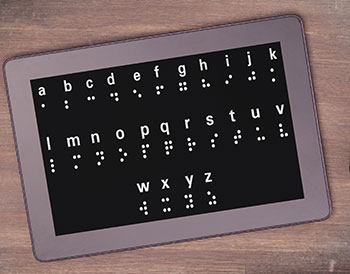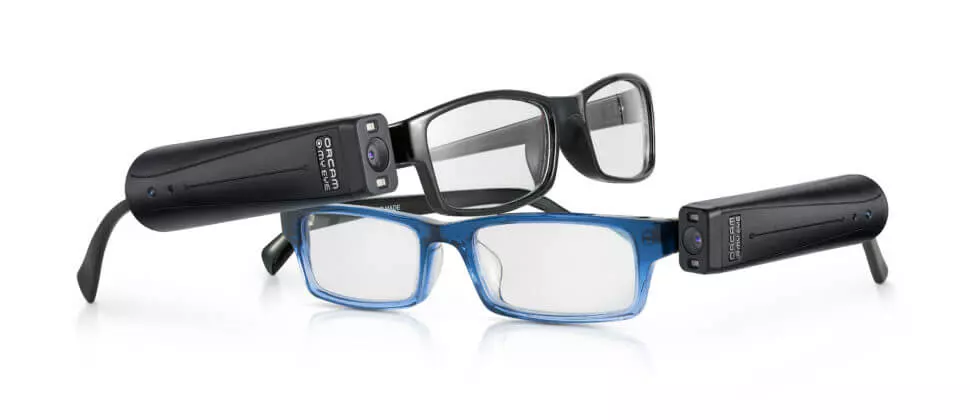Assistive Technology for the Blind: Tools to Transform Lives
Assistive Technology for the Blind: Tools to Transform Lives
Blog Article
Empowering Freedom With Assistive Technology for the Blind
The integration of assistive modern technology into the lives of people with aesthetic problems represents a considerable development in advertising freedom and self-sufficiency. From ingenious display readers to innovative smart canes, these devices not just boost daily navigating and interaction however also empower individuals to involve meaningfully in numerous facets of life. As we explore the myriad benefits and real-world applications of these innovations, it becomes important to examine the underlying factors that contribute to their performance and the possibility for future growths in this crucial area.
Overview of Assistive Technology
.png)
The advancement of assistive innovation is based in concepts of inclusivity and empowerment. Developments in software application, hardware, and sensory enhancements offer customers with alternatives tailored to their specific requirements. From screen viewers that transform message to speech, to tactile tools that share information through touch, these devices transform the method individuals engage with their environments.
In enhancement to functional applications, assistive innovation fosters greater social inclusion and participation in numerous fields, including education and learning and work (Speech-to-text devices for low vision). As study and growth remain to advance, the capacity for assistive innovation to even more enhance the lives of aesthetically damaged individuals continues to be promising, leading the way for a more equitable culture where everybody can grow
Kinds of Assistive Tools
A variety of assistive gadgets have arised to sustain individuals with visual impairments, each designed to satisfy certain requirements and enhance daily performance. These devices vary from low-tech remedies to modern developments, offering diverse alternatives for customers.
Low-tech devices include magnifiers and large-print materials that assist in analysis and writing. Braille devices, such as Braille stylus pens and slates, allow responsive reading and communication. Alignment and mobility help, like white walking canes, assist individuals browse their setting securely.
On the higher end of the range, electronic magnification systems and screen readers use considerable support. Electronic magnifiers allow customers to enlarge message and photos on screens, while display viewers transform digital content right into manufactured speech, assisting in access to info on mobile phones and computer systems.
Mobile phone applications likewise play an important role, giving attributes like message acknowledgment and navigation support. Wearable innovation, such as smart glasses equipped with enhanced reality, is becoming a promising tool to boost situational recognition.
Advantages of Assistive Modern Technology
The integration of assistive technology substantially enhances the top quality of life for people with visual problems. These innovations equip individuals by promoting independence, allowing them to browse their atmospheres better and execute daily jobs with better ease. Screen readers and magnification software program enable people to accessibility digital information, fostering instructional and professional possibilities that might have formerly been out of reach.
Furthermore, assistive devices such as smart walking canes and general practitioners applications offer real-time navigation help, enhancing mobility and safety. This raised freedom not only enhances self-worth however also motivates social engagement, allowing individuals to participate more completely in their neighborhoods.
Assistive modern technology also helps with interaction, assisting users get in touch with others through voice acknowledgment and text-to-speech applications. This ability is vital for keeping connections and accessing vital information.
Furthermore, the personalization options available with several assistive innovations ensure that customers can customize tools to their particular requirements, better enhancing use and efficiency. On the whole, the advantages of assistive innovation for people with aesthetic impairments are profound, advertising a much more inclusive society where everybody can pursue their desires and objectives.
Case Researches and Success Stories
Highlighting the transformative effect of assistive modern technology, various study highlight just how individuals with visual problems have actually efficiently integrated these tools od eye into their everyday lives. One engaging instance involves an university student that made use of display analysis software to browse online sources and scholastic materials properly. This modern technology not only promoted her education and learning but additionally boosted her self-confidence in participating in conversations and team projects.
Another study includes a specialist who employs a smart device application made for navigation and object acknowledgment. By utilizing this application, he has actually gained back autonomy in both his personal and workplace, allowing him to commute independently and engage with associates better.
Furthermore, a retiree shared her experience with braille e-readers, which enabled her to access a vast range of literary works and remain linked with her neighborhood with book clubs.
These success tales highlight the important role of assistive innovation in promoting self-reliance, improving high quality of life, and promoting social assimilation for individuals with aesthetic disabilities (Braille displays and notetakers). By welcoming these cutting-edge devices, users can get rid of difficulties and seize chances that add to their personal and expert fulfillment

Future Patterns in Assistive Modern Technology
Innovation in assistive technology is positioned to redefine the landscape of support for people with visual problems. Arising trends highlight the combination of expert system (AI) and artificial intelligence, which enhance the capability of devices that aid with navigation and information access. For circumstances, AI-driven applications are now with the ability of translating aesthetic data in real-time, enabling customers to involve with their setting extra individually.
In addition, the have a peek at this site growth of wearable innovation is advancing quickly. Smart glasses equipped with increased fact (AR) can give audio descriptions of environments, changing just how users connect with public spaces. These devices not only advertise autonomy but likewise foster social inclusion.
Additionally, the Internet of Things (IoT) is making homes smarter, enabling seamless connectivity in between everyday home appliances and assistive devices. This connectivity equips users by enabling voice-activated controls and automated actions customized to specific needs.
Final Thought
To conclude, assistive innovation plays an essential role in empowering individuals with aesthetic impairments by enhancing their self-reliance and engagement with their surroundings. The varied variety of applications and gadgets available not just promotes navigation and communication however also advertises social combination and opportunities for individual and professional development. As developments continue in this area, the possibility for boosting the lifestyle for those with aesthetic problems will certainly broaden, cultivating higher freedom check this and empowerment.

Report this page